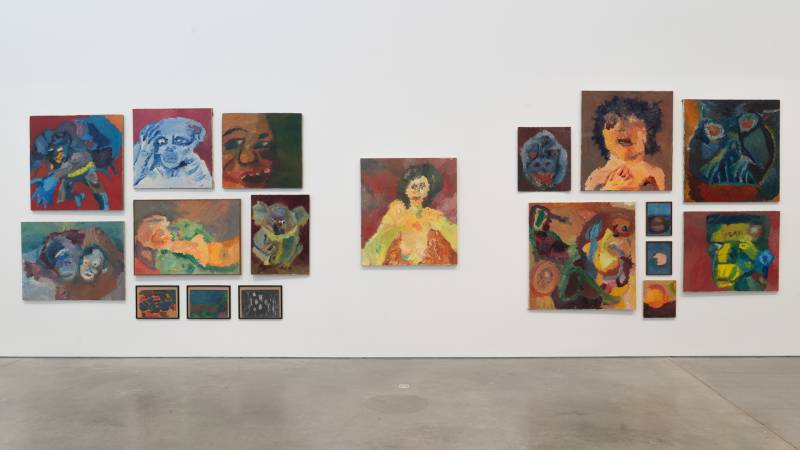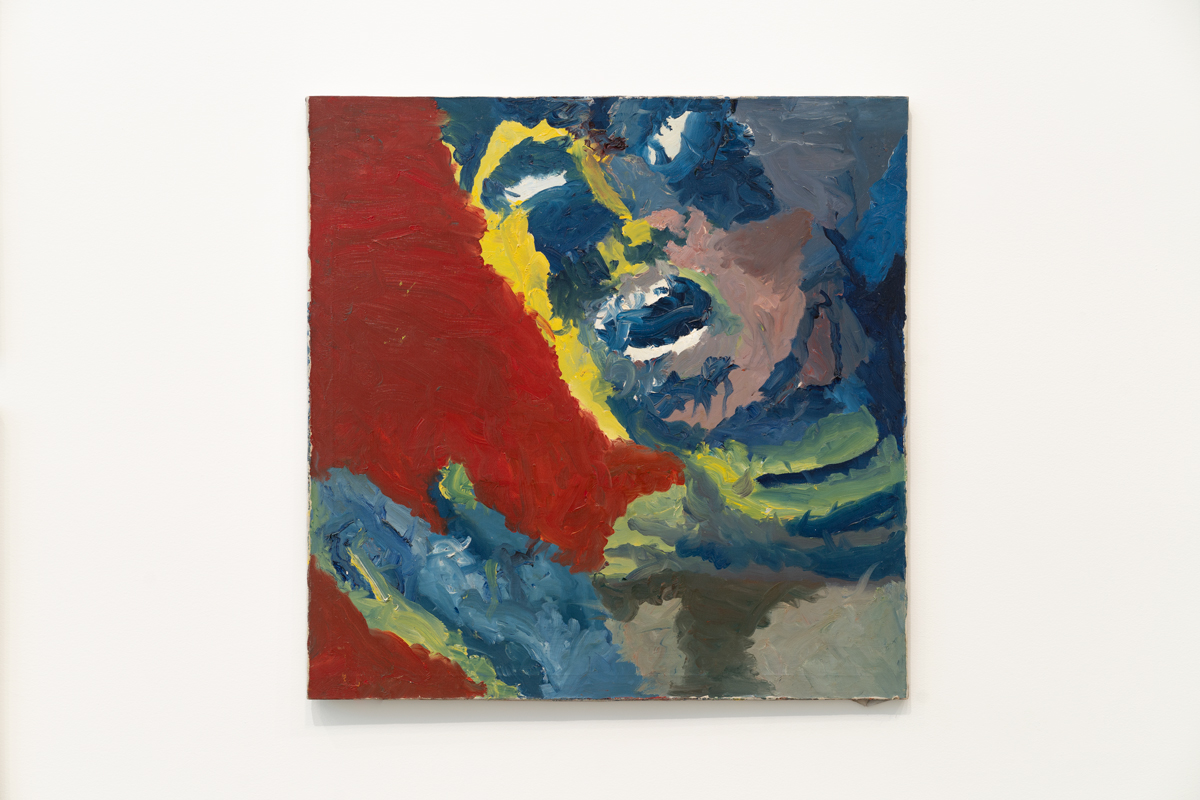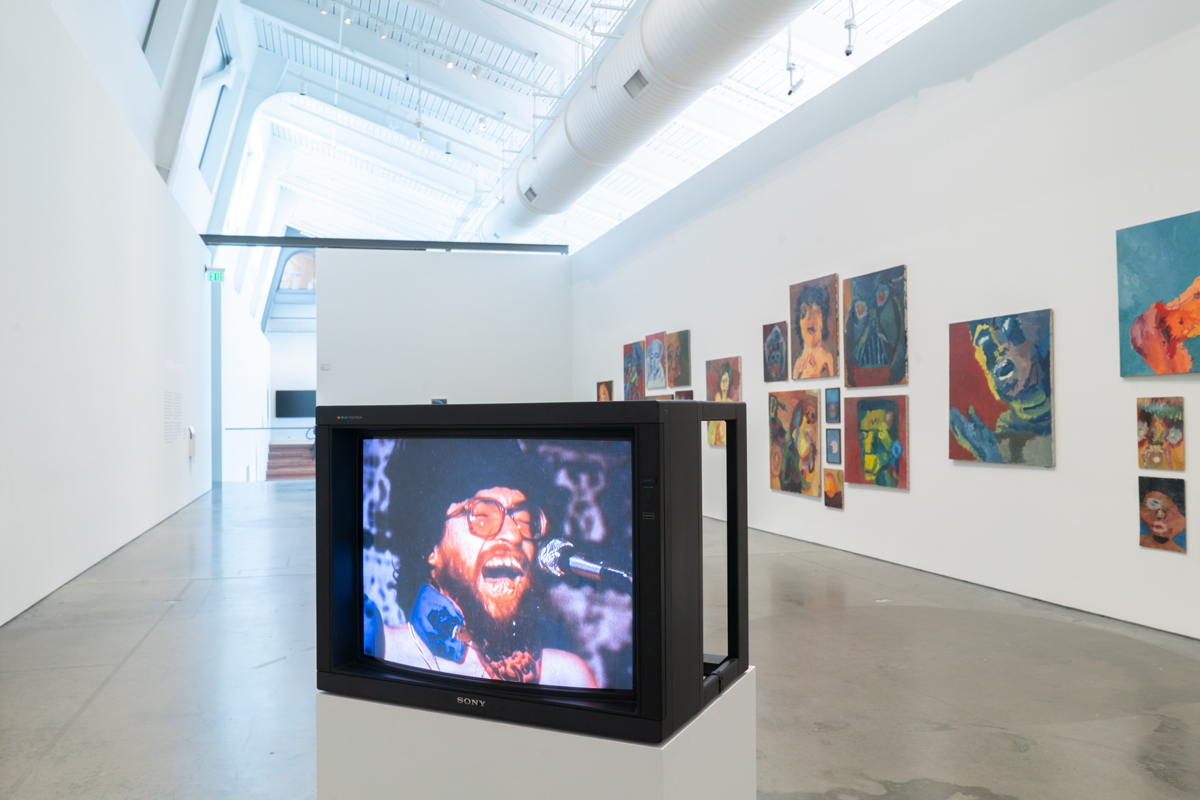Leave it to Bay Area legend Frank Moore to have more breasts in his first museum exhibition than a Girls Gone Wild VHS. One should expect no less from the exhibitionist, shaman, presidential candidate and performance artist, who passed away in 2013. His resume reads like an artistic Mad Libs in the best possible way. And his exhibition, now on display at the Berkeley Art Museum and Pacific Film Archive, conveys that warm and radical spirit through paintings sometimes delightfully imposing in scale.
Frank Moore’s Radical Portraits of Love, Lust and Pop Culture Solidify His Legacy

Part documentation of pop culture, part exploration of skin, the show isn’t a large one. But it is intimate and comforting; Moore’s paintings are neatly arranged, mainly on one wall, shirking the typical gallery experience. Titled Theater of Human Melting, the show is co-curated by San Francisco sculptor Vincent Fecteau and filmmaker Keith Wilson, whose feature documentary on Frank Moore is currently in production.
Their presentation method is purposeful. “We knew we wanted the exhibit to mimic the vibrancy and discordant nature of Frank’s own walls,” Wilson explained by email. “When hanging the show, we decided against organizing them by chronology or subject matter, and attempted to hang them in clusters that are both discordant and harmonious.”

Moore’s paintings are aggressive, frantic portraits of love, lust and icons rounded out with titles reflecting on death and absurdity (see Corpse Love or Rabbit on a Scooter). He painted similarly to how he communicated with his speech board, but in place of his pointer, he strapped a paintbrush to his head. His wife, Linda Mac, would set up his paints for him and rotate each canvas when instructed. He chose to paint portraits, he says in his book Art of a Shaman, “Because I wanted to see people nude, and touch them, and to create an intensity between us.”
Even though the work at BAMPFA was made between the 1960s and the early 1980s, Moore’s color choices remain fresh, balanced and striking. His work is linguistic; color choices speak to one another in juxtaposition rather than joining as one. Often not fully mixed, his brushstrokes could be seen as signs of his urgency to create. He was constantly working on something.
“One of the most striking things about these paintings are their expressive paint handling,” Fecteau says via email. “Though they are largely representative, their goal does not seem to be perfect description. Rather they seem to be searching for something beyond the surface.” The outcome is satisfying: a response Moore might not have focused on or cared about in his other mediums.
Moore was very “punk” in that way. He got a lot of satisfaction out of confusing his audiences, like the time he organized a kind of happening, directing women to flirt with men in coffee shops without the context of a stage or an announced performance. In so much of his work, Moore pushed performance past its typical setting, blurring the lines between audience and actor.

Theater of Human Melting brings together disparate images from the pop culture Moore admired, with depictions of Batman, Frankenstein and Patti Smith (he idolized punk rockers). He chose these subjects because they brought him joy. This decision to follow fulfillment was a key element of Moore’s life; one day he chose to find himself beautiful. His declaration of feeling worthy and valued moved others to see that quality in him. When the confines of society differed from his thought process, Moore turned to self-love, creating his most radical persona.
For Fecteau and Wilson, the process of working on this show has been deeply enmeshed with the ideas of disability aesthetics. “Disability is not something to overcome in order to make art or creative work. Disability itself is generative, producing art and ideas that would otherwise not be realized,” Wilson says. Had Moore not been who he was, Wilson adds, “these dynamic, gestural, melting paintings would not be possible.”
A decade after his death, Moore’s legend continues. The BAMPFA exhibit includes the trailer for a newly launched web series called Let Me Be Frank, featuring a song with his vocals and samples of his performance pieces. If nothing else, this body of work at BAMPFA might make you feel a bit antagonized, and rightfully so. The essence of Frank Moore is that there can always be more: more creation, more exploration, more enjoyment in living life. And he’d want you to know that.

‘Frank Moore / MATRIX 280: Theater of Human Melting’ is on view at the Berkeley Art Museum and Pacific Film Archive through April 23, 2023. Details here.

